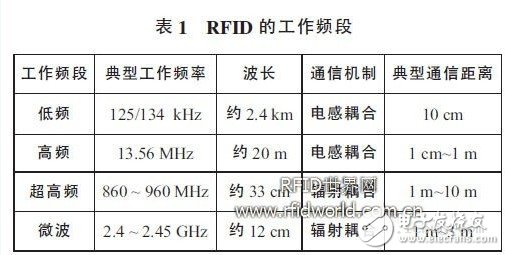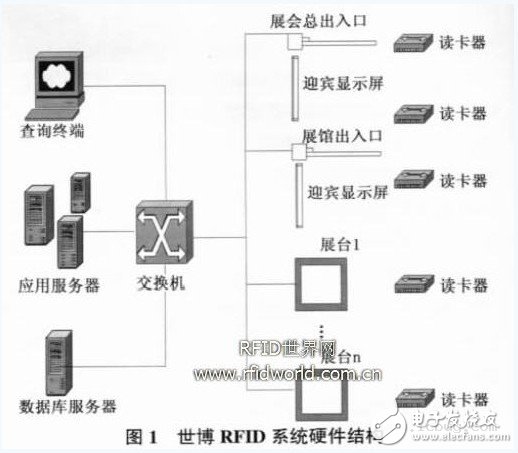The Shanghai World Expo, scheduled to open on May 1, 2010, will run for 184 days. It is expected to welcome over 70 million visitors and attract participation from more than 200 countries and international organizations. The theme of the event, "Better City, Better Life," highlights innovation and sustainability. Additionally, the use of RFID technology in the ticketing system is set to revolutionize the way events are managed, offering a more efficient and secure experience for attendees.
RFID, or Radio-Frequency Identification, is a technology that uses radio waves to transmit information between a tag and a reader without physical contact. This is achieved through spatial coupling via an alternating magnetic field or electromagnetic field. RFID can operate at distances ranging from 10 cm to 10 meters, depending on the frequency used. It is capable of functioning in harsh environments, identifying multiple objects simultaneously, and even reading tags attached to fast-moving items, making it highly versatile and efficient.
Compared to traditional identification methods like barcodes, RFID offers several advantages, including automatic data capture, long-range identification, and the ability to recognize multiple targets at once. These features make it ideal for applications such as supply chain management, urban transportation systems, anti-counterfeiting measures, and personal data collection.
An RFID system typically consists of three main components: a tag, a reader, and an antenna. The tag contains a chip and a coupling element, with each tag assigned a unique electronic code (EPC) to identify the object it is attached to. The reader is responsible for reading and, in some cases, writing data to the tag, and can be either handheld or fixed. The antenna facilitates communication between the tag and the reader by transmitting RF signals.
The basic working principle of RFID involves the tag receiving a signal from the reader when it enters the reader’s range. If it is a passive tag, it uses the energy from the signal to power its internal circuitry and send back the stored data. Active tags, on the other hand, have their own power source and can actively transmit signals. Once the reader captures this information, it decodes it and sends it to a central system for further processing.
RFID has several key advantages over other technologies. It can read multiple tags at once, does not require a light source, can store large amounts of data, and allows for repeated reading and writing. Additionally, RFID tags can be very thin and hidden within packaging, yet still be readable. They can also function in challenging environments, such as dusty or dirty areas, and support high-speed reading, making them ideal for real-time tracking and monitoring.
RFID systems operate across four main frequency bands: low frequency (LF), high frequency (HF), ultra-high frequency (UHF), and microwave. Each band has specific characteristics that determine its application. For example, LF RFID is often used for animal identification due to its strong penetration capabilities, while HF RFID is commonly found in access control systems and ID cards. UHF RFID is widely used in logistics and inventory management because of its longer read range and faster data transfer speeds.

RFID technology has already been successfully applied in major global events, such as the Aichi Expo in 2005 and the 2006 FIFA World Cup. These examples demonstrated how RFID could enhance security, reduce wait times, and improve overall efficiency. At the 2008 Beijing Olympics, RFID was used extensively for ticketing, attendance tracking, and visitor services, setting a precedent for future large-scale events.
The 2010 Shanghai World Expo presented a unique opportunity to implement RFID on a massive scale. With millions of visitors expected, the organizers needed a system that could handle crowd flow, manage traffic, provide accurate information, and ensure ticket security. RFID offered a solution that could meet these demands effectively. Exhibitors could track visitor behavior, volunteers could assist more efficiently, and visitors could quickly access the information they needed.
By embedding RFID tags into tickets, visitors could move through the venue seamlessly. Readers placed at booths would collect data on visitor movements, helping exhibitors understand who visited their stands and what interests they had. Multimedia kiosks equipped with RFID readers allowed visitors to navigate the expo, locate exhibits, and even find lost companions. This level of integration made the event more interactive and user-friendly.
To ensure the success of the RFID system at the World Expo, several key technologies needed to be addressed. First, anti-collision techniques were essential to prevent signal interference when multiple tags were read at once, especially during peak hours. Second, secure encryption was necessary to protect data both in storage and during transmission, ensuring the authenticity of tickets and preventing fraud. Third, the system needed to process large volumes of data efficiently, allowing for real-time insights and personalized services for visitors.
The hardware design of the RFID system for the World Expo required a robust and flexible infrastructure. Critical servers were backed up with dual-system redundancy to ensure continuous operation. The system architecture was designed to handle high traffic and maintain stability throughout the event. As shown in Figure 1, the layout included centralized data processing, distributed readers, and secure communication channels to support seamless operations.

Desktop Dry Herb Vaporizers,Environmentally Friendly Dry Herb Vaporiser,Professional Production Of Hay Evaporator,Small Electronic Hay Vaporiser
END GAME LABS , https://www.eglvape.com